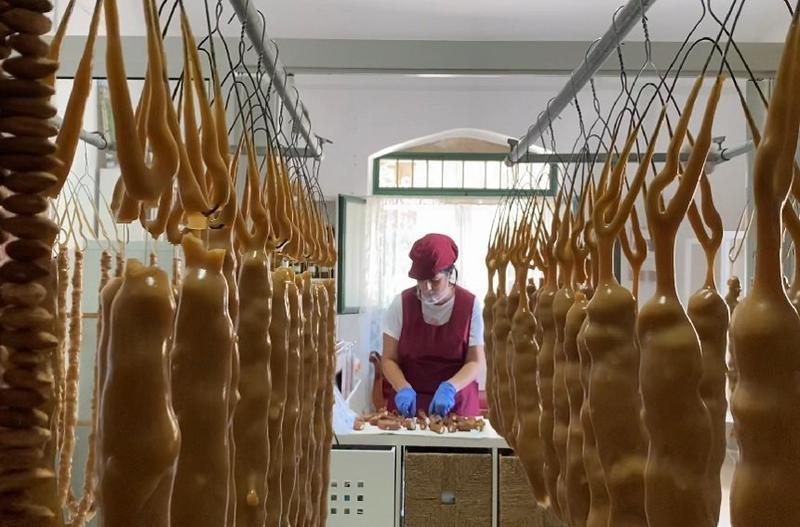
Every autumn, while traversing through the wine villages in the Limassol countryside, you will catch a scent of grape must in the air, as it flows abundantly into the barrels following the grape harvest. This must is used as a main ingredient for one of the most characteristic Cypriot delicacies: palouze.
The ritual of making palouze, as well as its byproduct, soutzouko, is almost as enjoyable as their rich, sweet taste. The grape juice is boiled in large cauldrons. Once the juice has reached boiling point, flour is added until a thick jelly is formed, which is then simmered for about an hour.
Palouze must then be stirred continuously while it simmers. Traditionally it is done with large wooden ladles, though special cauldrons with mechanical stirrers are often used today.
To make soutzouko, the palouze is prepared and then strings of almonds or walnuts are dipped into the jelly. After several dips, delicious, thin layers of jelly are formed around the nuts.
Palouze is ideally enjoyed warm, as soon as it comes out of the cauldron, but it is equally tasty when eaten cold. Another popular treat is made from the leftover palouze, which is cut into strips and dried. These are called kiofterka, and they are a perfect accompaniment to wine and zivania, as is soutzoukos.